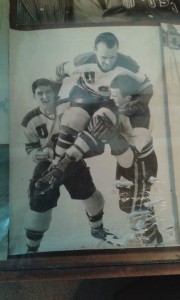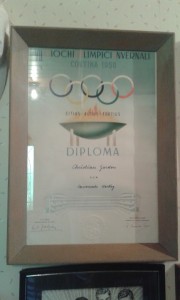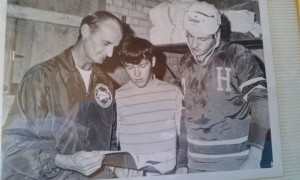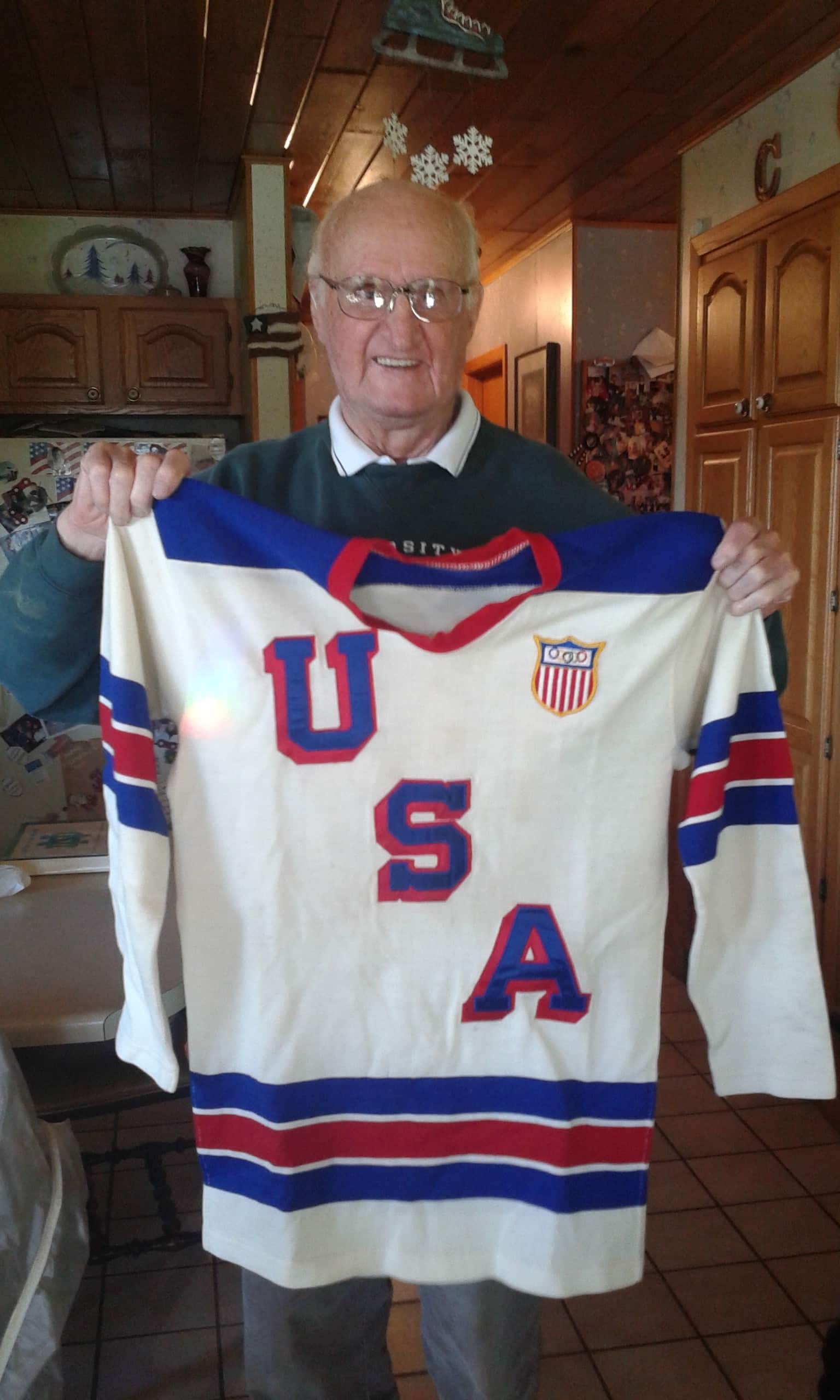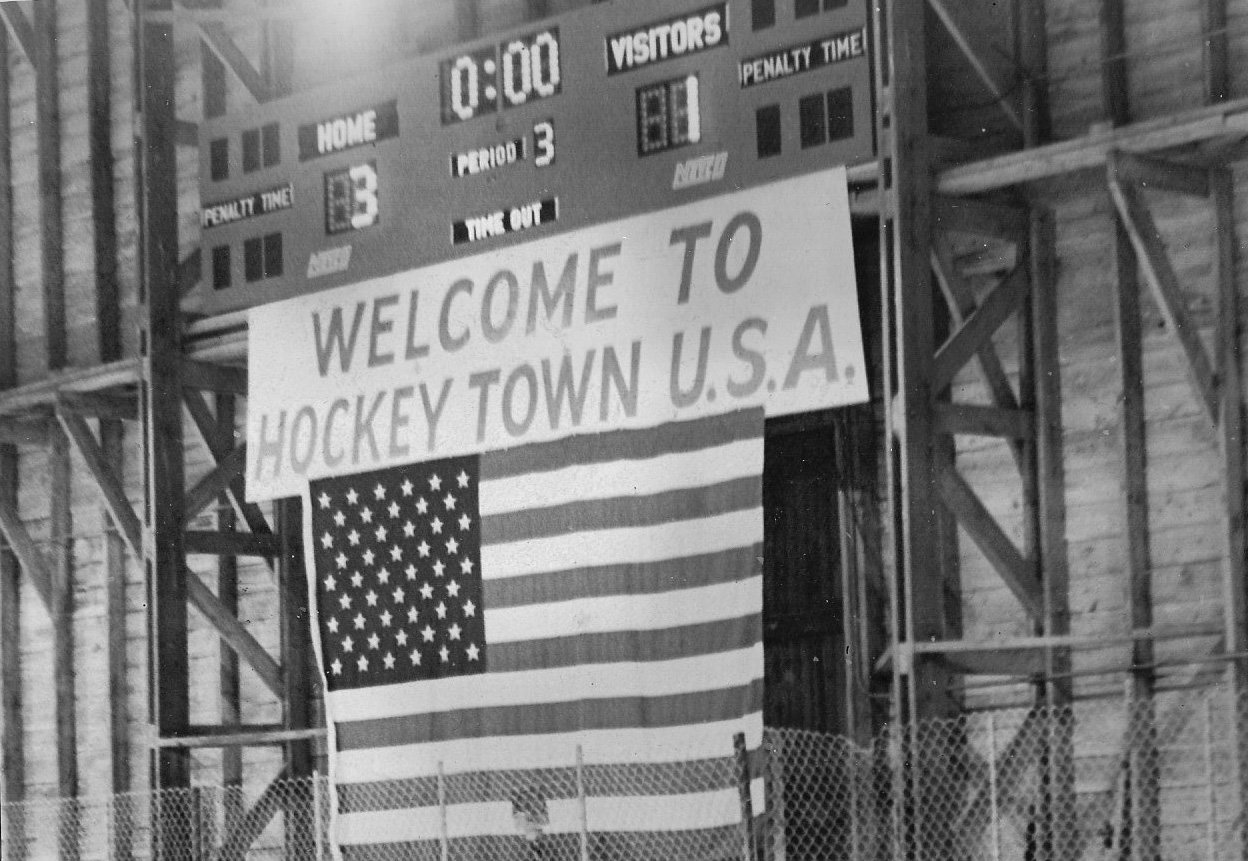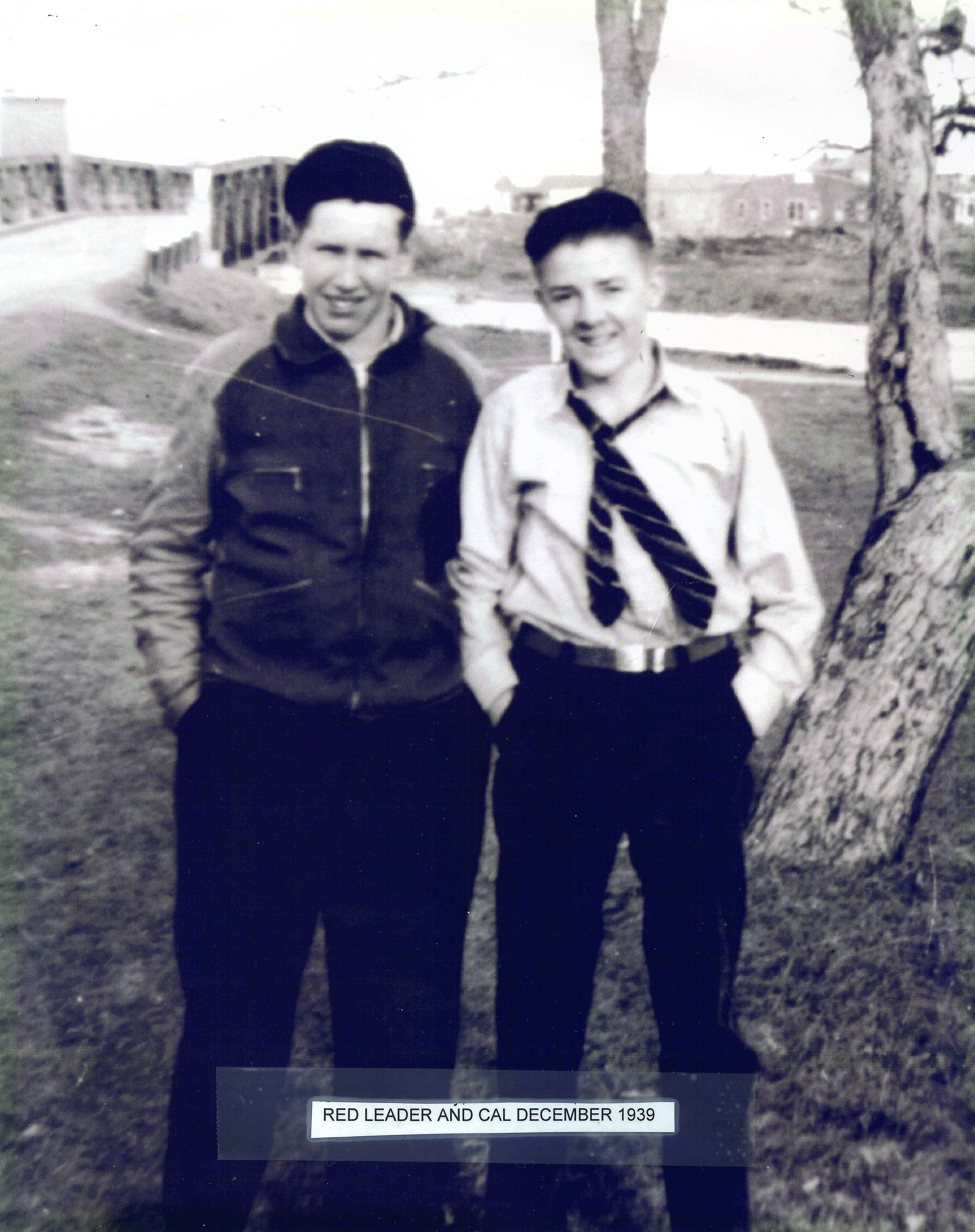The debate is over. It’s official. No, seriously, it is.
In 2014, Warroad received confirmation that they could finally begin using the name “Hockeytown USA™” for marketing purposes, solidifying their rightful
ownership of the moniker.
While various communities across the United States have tossed around informal ownership of the nickname, since 1996 the trademark had been legally owned by the
Detroit Red Wings of Detroit, Michigan. Warroad never saw the need to pursue legal ownership of the name because it was an implicit given that Warroad was the original
Hockeytown, USA.
In 2000, the Red Wings dropped the “USA”
portion of the moniker, leaving only Hockeytown to
accompany their red wings-on-a-wheel logo. When
Chamber of Commerce Executive Director, Donna
LaDuke, discovered that the complete “Hockeytown USA” was available, she immediately approached Warroad
mayor, Bob Marvin, who granted permission to
proceed with application for the
famous name. “That was four years ago. It has been a long process, but it has been worth it,” said LaDuke.
At the Warroad Heritage Center, you can find articles, books, and
documents laying out facts,
statistics, and achievements that
back up Warroad’s claim to fame.
But Hockeytown USA isn’t just
about which town has bred the best hockey players – it’s about passion and commitment. Hockeytown USA is about turkey bingos, ice cream
socials, and raffles, and all the
generations of people who worked on the sidelines and behind the scenes. It’s about community.
It’s been said that when George
Marvin first arrived in Warroad in 1904, he was asked, “Do you play
hockey?” Community elders share stories of when hockey was played on the river; kids shoveling rectangles of space, ignoring the unevenness
of the ice. Fans standing in
snowbanks. Hockey equipment was expensive and players improvised with what they had. The Olympic Christian brothers, Roger, Bill, and Gordon a.k.a. “Ginny,” were
hardworking boys with only one pair of skates between them. The skates were old and the boys didn’t wear the same size. But that didn’t matter. They took turns wearing the skates, coming off the ice when they got cold, giving the next brother a turn. Henry Boucha in his autobiography, Henry Boucha, Ojibwa: Native American Olympian, describes having only one game stick
for games, and would salvage
broken sticks from the high school and
Lakers games to play road hockey.
“To fix them we used nails and wrapped them with tape.”
In the 1940s, at a time when
Warroad needed infrastructure – a
library, some sidewalks, and a paved street or two would have been nice – a group of citizens also felt the need for an indoor rink. Cal Marvin, who was later dubbed “the godfather of
Warroad hockey,” was so insistent on it, that according to the book Cal and the Lakers: Winning Under Two Flags by Warren Strandell, Cal “named the Warroad Arena Fund as the
beneficiary for his $10,000 national life insurance policy in the event he would not survive World War II.”
Cal did survive, and in May,
1945, the Warroad Recreational
Association incorporated for the
purpose of building a WWII
Memorial Arena. The group set about
fundraising the $10,000 needed to build the rink coming up with many creative ways to raise money
including hosting dances, bingos, and benefits. In the meantime, the
Warroad Lakers – considered the best senior amateur team in North America – began playing in 1947 on the outdoor rink and on the river.
In June, 1949, with $9,500,
construction for the indoor rink began under the leadership of Ed Christian. In an article written by Cal himself
for the Warroad Pioneer newspaper,
he said, “Every evening and each weekend volunteers joined the
work crews for wiring, shingling,
plumbing, heating, roofing, and
cement pouring.” It was an intense summer, but the community got the Memorial Arena built just in time for the 1949-50 hockey season. Maybe it didn’t have heat or locker rooms, but it was theirs.
Since the 1950s, “Hockeytown USA” has been displayed on buildings,
billboards, and hockey play lists. For example, where the Marvin Home Center stands today along Highway
11, there used to be a storage
building that was painted white on one side with “Hockeytown USA”
accompanied by the Olympic rings. Over the years, this “Wall of Fame” had been updated to honor local players who had made it to the NHL, which include: Dave Christian, Alan
Hangsleben, and Henry Boucha; to the Olympics: Roger Christian, Bill Christian, Dave Christian, Dan
McKinnon, Gordon Christian, and Henry Boucha; as well as those who’d been inducted into the U.S.A. Hockey Hall of Fame: Cal Marvin, Bill Christian, Roger Christian, and Henry Boucha.
It also commemorated the years the infamous Warroad Lakers won the
Allan Cup: 1994, 1995, and 1996. “Hockey Town, U.S.A.” was also
proudly displayed on the outside of the former Christian Brothers hockey stick factory. Even the water tower has crisscrossed hockey sticks on it.
This community went on to rally
around hockey in a way that is
uniquely singular and practically
poetic. The Warroad Lakers had a
successful 50-year stint of playing some of the best hockey in North America despite the ongoing chase
to find enough money to fund the programs and tournaments, to pay players, and to have enough
equipment, let alone good
equipment.
Eventually, the Memorial Arena was replaced by the Gardens and the Olympic arenas. Foreign and Olympic teams came to Warroad to play and in turn, the Lakers travelled worldwide for tournaments. Kids had a unique
opportunity to practice with,
essentially professionals – their very own pre-NHL right in their own
backyard. High school hockey
graduates would come back to
Warroad, mentoring that next
generation of skaters as they were mentored. Ice time has always been free. For the people, it wasn’t about franchises, branding, or even
necessarily making a name for the town – but an honest-to-goodness reverence and love for a game that brought the community together.
“It was remarkable,” said Beth Marvin, Cal’s wife and curator of the Warroad Heritage Center. “The community wanted it. Especially when we could get the teams that we could get. There wasn’t another town like it. All those Olympics teams; it was something so big. It was bigger than our town.”
Cal Marvin, notably, was a natural born leader and the face of Warroad hockey. But if he were here today, he wouldn’t want all the glory. He would be quick to point out the contribution
of so many others: the Warroad
families, the Lakers players, the vast network of coaches and event
organizers across the sports world, and the next generation of kids being raised with the game.
Today, strong involvement and
community commitment continues as volunteers come together to raise funds to pay for programs, equipment, opportunities, and renovations to the arenas just like in the earlier days. The work of many hands has culminated in a hockey legacy that Warroad can be proud of.
To the impressive list of successful
Olympic athletes coming out of
Warroad, Gigi Marvin (granddaughter of Cal Marvin) and TJ Oshie (grandson of Buster Oshie) can be added. It’s hoped that Brock Nelson (grandson of
Billy Christian), too, will be an
Olympian at the 2018 Winter Games in PyeongChang, South Korea.
Yes, Warroad is home to a
long-standing tradition of high
quality hockey. But it’s the spirit of creating something out of nothing in a small, remote, northern Minnesota town that makes it special. That this little
community could have such passion and leaders who could pull it all together. That is magic. And that is what makes Warroad deserving of the title “Hockeytown USA.”
To learn more about Warroad’s history, visit the
Warroad Heritage Center and the Wm. S. Marvin Training & Visitor Center.™
